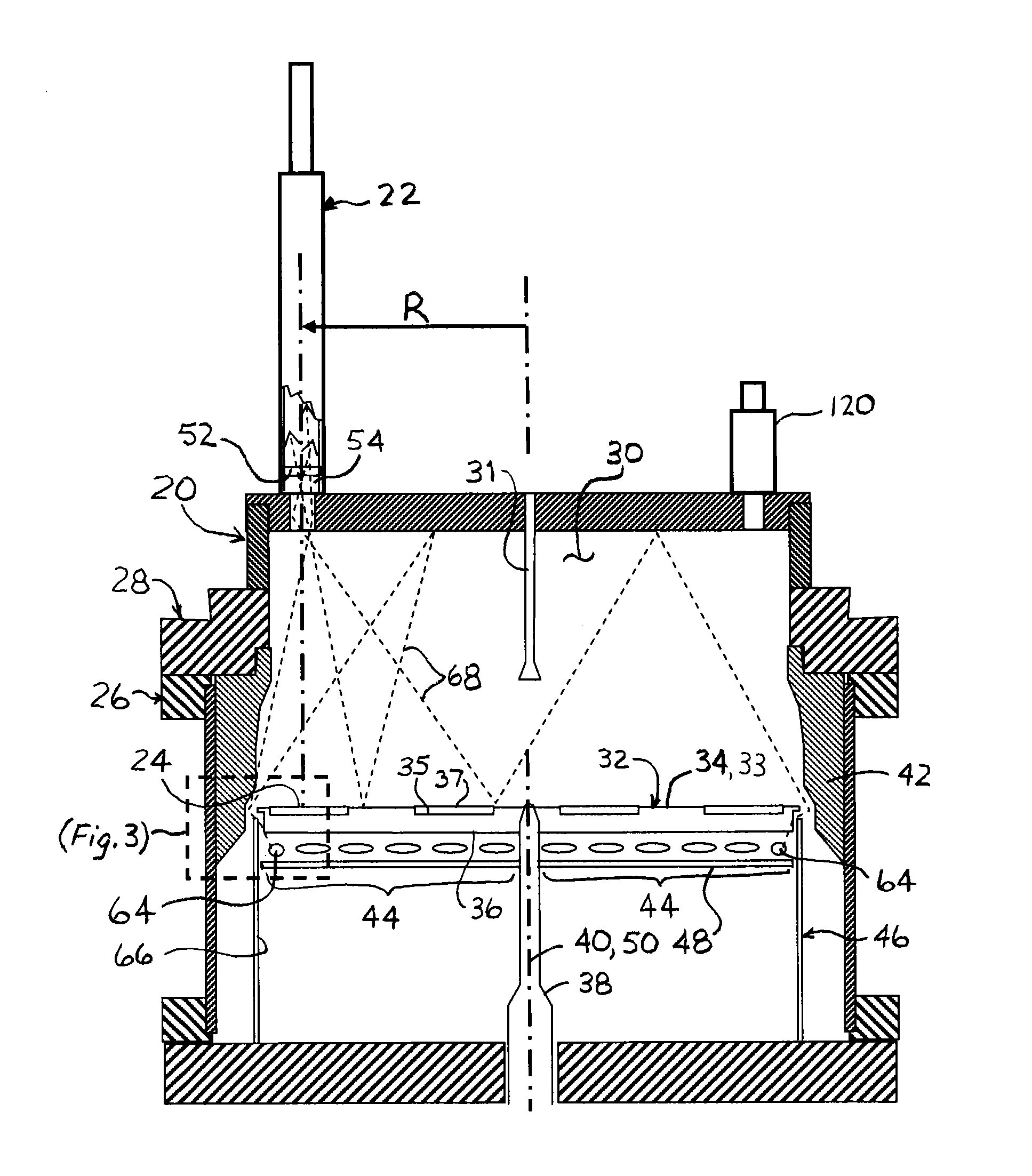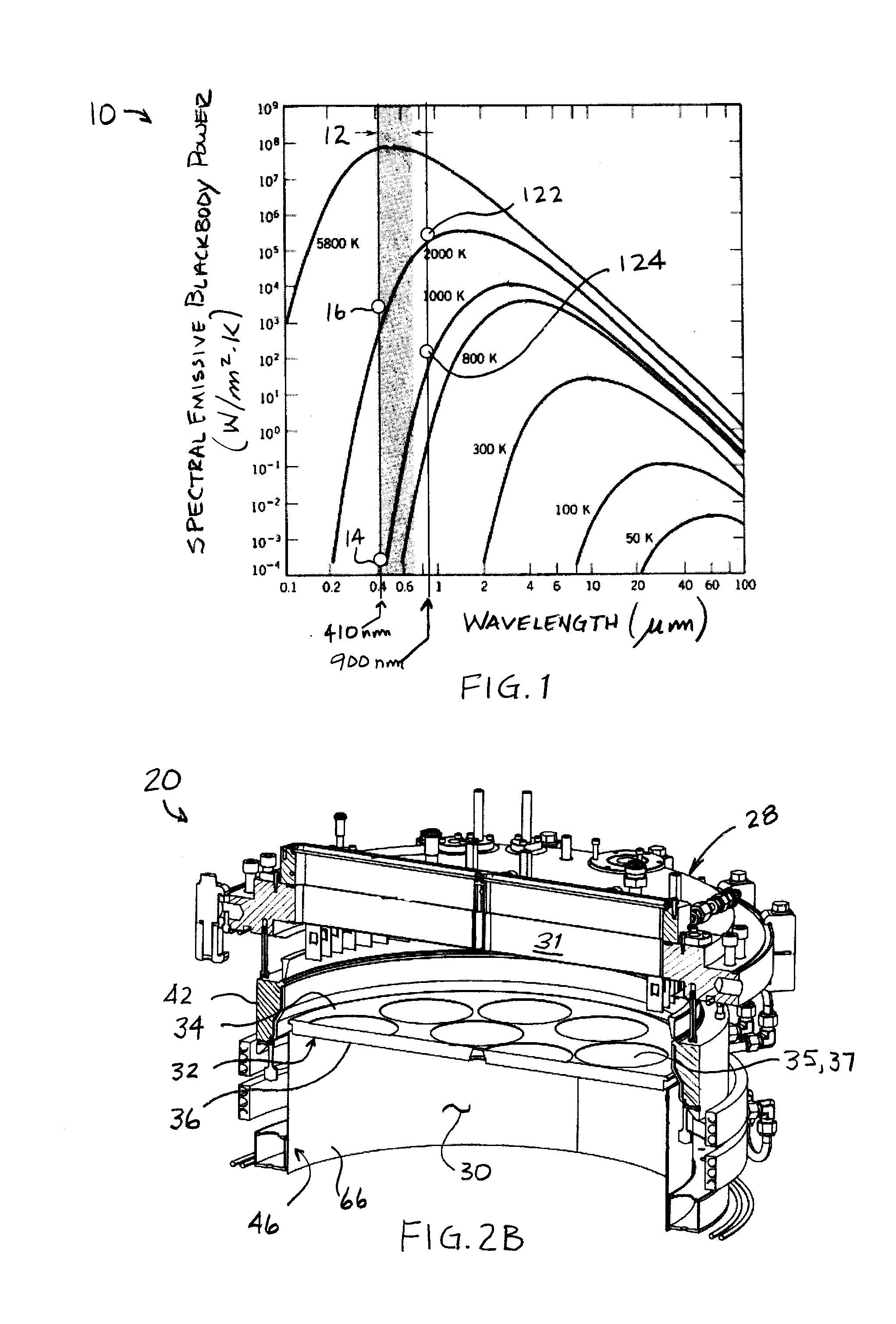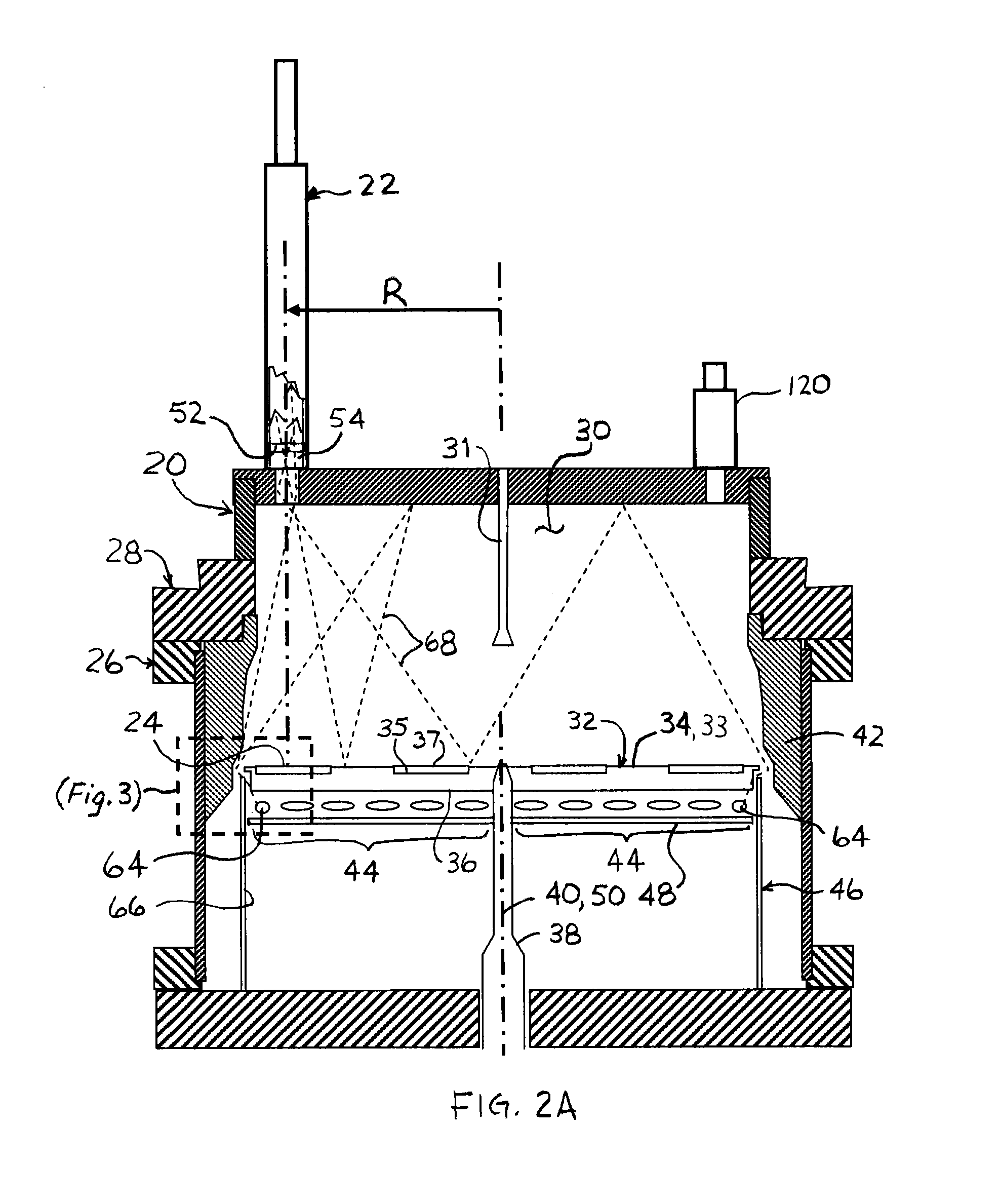Control of stray radiation in a CVD chamber
- Summary
- Abstract
- Description
- Claims
- Application Information
AI Technical Summary
Benefits of technology
Problems solved by technology
Method used
Image
Examples
Embodiment Construction
[0035]Referring to FIG. 1, a family of curves 10 depicting the spectral blackbody emissive power in accordance with Planck's law at various temperatures is presented. The visible spectral region 12 of the electromagnetic spectrum, coinciding approximately with the 400 nm to 700 nm wavelength band, is also identified in FIG. 1. In relation to the previous discussion of the effect of temperature on the blackbody emissive power at 410 nm, first and second reference points 14 and 16 are identified in FIG. 1 at 1073 K and 2073 K, respectively (corresponding to 800° C. and 1800° C., respectively).
[0036]Referring to FIGS. 2A and 2B, a MOCVD reactor system 20 utilizing a radiation thermometer 22 arranged to view a target 24 within the MOCVD reactor system 20 is depicted. The MOCVD reactor system 20 includes a reactor chamber 26 operatively coupled with a flow flange 28 to define an enclosure 30. The flow flange 28 includes laminar flow plates 31 through which the gases for the MOCVD process...
PUM
| Property | Measurement | Unit |
|---|---|---|
| Temperature | aaaaa | aaaaa |
| Diameter | aaaaa | aaaaa |
| Width | aaaaa | aaaaa |
Abstract
Description
Claims
Application Information
 Login to View More
Login to View More - R&D
- Intellectual Property
- Life Sciences
- Materials
- Tech Scout
- Unparalleled Data Quality
- Higher Quality Content
- 60% Fewer Hallucinations
Browse by: Latest US Patents, China's latest patents, Technical Efficacy Thesaurus, Application Domain, Technology Topic, Popular Technical Reports.
© 2025 PatSnap. All rights reserved.Legal|Privacy policy|Modern Slavery Act Transparency Statement|Sitemap|About US| Contact US: help@patsnap.com



